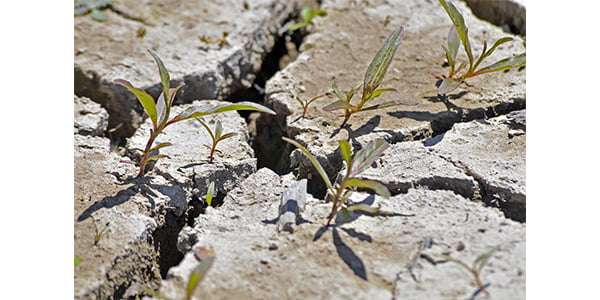Gypsum effect on reducing soil erosion

Gypsum effect on reducing soil erosion
Gypsum can help to reduce soil erosion by improving soil structure and increasing the stability of soil aggregates. When soil is eroded, it is typically due to the loss of topsoil, which is the upper layer of soil that contains most of the organic matter and nutrients that support plant growth. Topsoil erosion can occur when wind or water carries away the small soil particles that make up the topsoil.
Gypsum can help to reduce topsoil erosion by binding soil particles together into larger aggregates, which are more resistant to erosion. This is because gypsum contains calcium, which can act as a natural cementing agent to bind soil particles together. Additionally, gypsum can help to reduce surface crusting, which can occur when soil particles are compacted and form a hard, impermeable layer on the soil surface. Surface crusting can reduce water infiltration into the soil, which can lead to runoff and erosion.
Creating more stable soil environment
By improving soil structure and reducing surface crusting, gypsum can help to create a more stable soil environment that is less prone to erosion. However, it’s important to note that while gypsum can be effective in reducing soil erosion, it should be used in conjunction with other soil conservation practices, such as cover crops, conservation tillage, and erosion control structures, to achieve the best results.
In addition to the ways that mentioned earlier, gypsum can also help to reduce soil erosion by improving soil permeability. When soil is compacted or contains high amounts of clay, it can become impermeable and resist water infiltration. This can lead to increased runoff and erosion, as well as decreased plant growth due to limited water availability. Gypsum can help to break up clay soils and improve soil permeability, allowing water to infiltrate into the soil more easily and reducing the amount of runoff and erosion.
Plant growth effect on reducing soil erosion
Another way that gypsum can help to reduce erosion is by improving plant growth. When plants are able to grow more vigorously, they can help to stabilize the soil and reduce erosion. Gypsum can improve plant growth by increasing the availability of nutrients such as calcium and sulfur, which are important for plant growth. Additionally, gypsum can help to reduce soil toxicity by reducing the availability of harmful elements such as aluminum, which can be toxic to plants and inhibit their growth.
Finally, it is worth noting that gypsum can be particularly effective in reducing erosion in areas that experience heavy rainfall or flooding. This is because gypsum can help to improve the soil structure and permeability, allowing water to infiltrate into the soil more easily and reducing the amount of runoff and erosion that occurs during heavy rainfall or flooding events.
Can gypsum be used for all soil types?
Gypsum can be used in many types of soil, but its effectiveness may vary depending on the soil type and other environmental factors. Gypsum is most effective in soils that are high in clay content, because it can help to break up the clay particles and improve soil structure. In these types of soils, gypsum can help to reduce soil compaction and improve water infiltration and drainage.
However, gypsum can also be beneficial in other types of soils. For example, in sandy soils, the gypsum can help to improve the soil structure by binding soil particles together and reducing the erosion. In soils that are naturally acidic, the gypsum can help to neutralize soil acidity by releasing calcium ions, which can improve nutrient availability and plant growth.
It’s worth noting that while gypsum can be beneficial in many types of soil, it’s important to consider the specific soil conditions and to use gypsum in conjunction with other soil management practices to achieve the best results. For example, in some cases, gypsum may not be necessary or may need to be used in combination with other amendments to achieve the desired soil improvements.
Additionally, it’s important to follow recommended application rates and timing based on soil test results, as excessive application of gypsum can lead to a buildup of salts in soil, which can be harmful to plants. Overall, the use of gypsum should be based on a careful assessment of soil conditions and management goals, and should be part of a comprehensive soil management plan.
